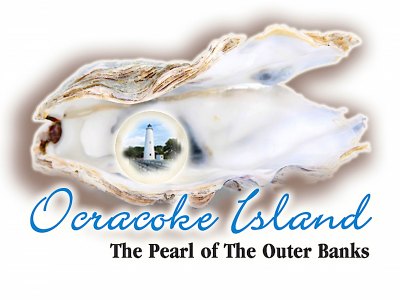A few weeks ago, a man who I estimated was about my age – mid 30’s – walked up to me, handed me a map, and with a bewildered look on his face, asked, “Where the hell am I?” His expression told me he had not planned to end up here, but he was friendly and didn’t seem panicked, so the following conversation – while quick – was pleasant. I believe, since I haven’t seen the man again, he successfully made it to his destination.
When one visits a new destination, it seems natural to pick up a local map. The village map for Ocracoke reads, “The Pearl of the Outer Banks.” But why has Ocracoke been given that nickname? Visitors, as well as residents, have heard this sweet island called The Pearl, and until recently, I hadn’t heard of anyone asking why.
So, why is Ocracoke known to be The Pearl of the Outer Banks? It’s fitting since this location is so special and unique, much like a pearl, and it is also fitting because consuming locally harvested oysters appeals to the island’s residents and visitors. I first tried what I knew without a doubt to be local oysters on Boxing Day of 2014. Some were being grilled, others were eaten raw. I stood outside listening to Rob Temple, Philip Howard, and David Frum tell stories, while John Brodisch taught me how to shuck oysters. I sampled both the cooked and raw oysters with several dipping sauces, and hands down I preferred the raw oysters, in case you were wondering.
But, getting back on track, Ocracoke was not nicknamed The Pearl because of local oysters. One of the biggest draws to the island is the 75-foot lighthouse which has been a harboring light since 1823. This is where Ocracoke got its nickname. The white-washed exterior wall, off-centered light room, and stout stature of the Ocracoke Light Station make it a unique and treasured landmark. Its base is only 25-feet across, and as the winding stairs ascend to the top, the width diminishes to just 12-feet, making this lighthouse ill-suited for climbing tours.

Prior to 1946, when the lighthouse was automated, the Lightkeeper was responsible for carrying whale oil up to the top to illuminate the Fourth Order Fresnel Lens. He was also responsible for cleaning the lens, which projects the solid beam of light 14 miles out to sea. The Lightkeeper’s Quarters – along with the lighthouse- were built for a cost of $11,000. The home was a one-story building, and after World War II the United States Coast Guard added the second floor to house personnel. Also during this time the wooden stairs inside the tower, which had been mounted against the inner wall, were replaced by more secure steel stairs.
The Lightkeeper was also responsible for maintaining the white exterior wall of the light station. When the lighthouse was first put to use, the Keepers of the light station were instructed to mix a half bushel of lime, a peck of salt, half pound of powdered whiting, and three pounds of ground rice in boiling water with a pound of clear glue to produce paint. The United States Lighthouse Service recommended the mixture be painted on the structure at a piping hot temperature. Once it dried, the mixture produced a pearly-white color, and though the old painting mixture is no longer used, the light station is still a pearly-white color.
